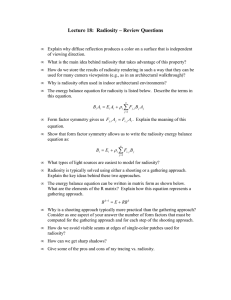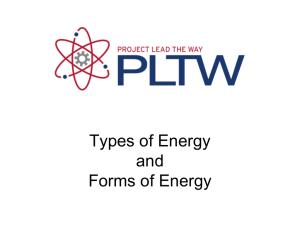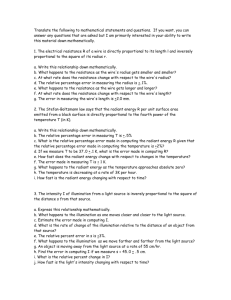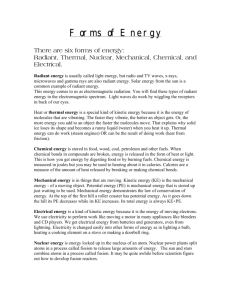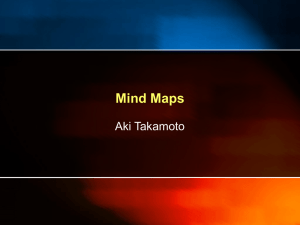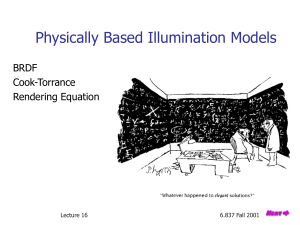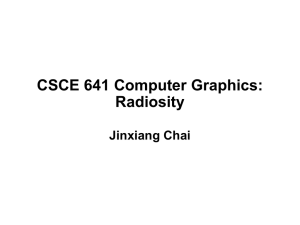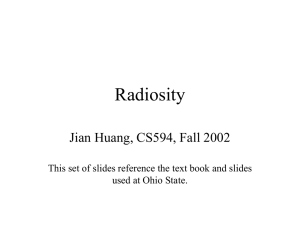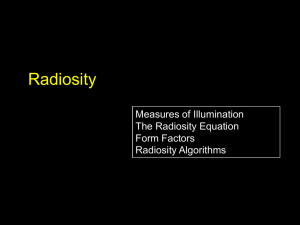Global Illumination
advertisement
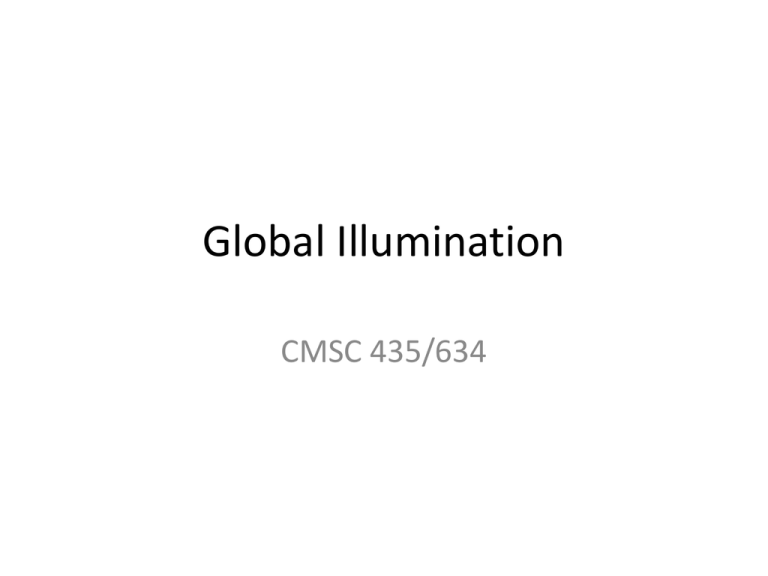
Global Illumination CMSC 435/634 Global Illumination • Local Illumination – light – surface – eye – Throw everything else into ambient • Global Illumination – light – surface – surface – … – eye – Multiple bounces – All photon paths: • Reflection, refraction, diffuse • Participating media Global Illumination ambient no ambient global illumination Radiometric Units Term Radiant Energy Symbol Q Units J Radiant Flux (Power) = dQ/dt W = J/s Radiant Intensity Radiosity (exiting) Irradiance (entering) Radiance W/sr W/m2 W/m2 W/(sr m2) I = d/d B = d/dA E = d/dA L = d2/(d dA) Radiant Energy (Q) • Total energy (Joules) • Over all time, directions, area, … Radiant Flux () • = dQ/dt in Watts = J/s • Radiant energy per unit time • This is the one you probably want – Unless you are measuring total energy absorbed – E.g. by a plant over hours of daylight Radiant Intensity (I) • I = d/d in W/sr • Radiant Flux emitted per unit solid angle – Light from a point in a small cone of directions Radiosity (B) • B = d/dA in W/m2 • All light leaving a patch of surface – Emitted or reflected – All directions – Measured per unit area Irradiance (E) • E = d/dA in W/m2 • All light entering a patch of surface – All directions – Measured per unit area Radiance (L) • L = d2/(d dA) in W/(sr m2) • Light entering patch of surface from a direction – Per unit area – Per unit solid angle – Think of light coming into a patch of surface from a small cone of directions • Compare to Irradiance (over all directions) Photometric Units • Considers human response – How bright it seems Term Luminous Energy Symbol Q Units T Name Talbot Luminous Flux = dQ/dt lm = T/s Lumen Luminous Intensity I = d/d cd = lm/sr Candella Illuminance E = d/dA lx = lm/m2 Lux Luminance L = d2/(d dA) nt = cd/m2 Nits Backward Algorithms: Ray / Path Tracing • Follow photons backwards: eye to light • Traditional ray tracing – Follow primary reflection • Path tracing – Monte-carlo integration – Probabalistically choose path direction – Many rays per pixel Kajiya 1986 Forward Algorithms: Photon Map • Follow photons forward: light to eye • Photon Map – Bounce photons from surface to surface – Collect in spatial data structure – Final gather per pixel Wann Jensen and Christensen 1998 Forward Algorithms: Radiosity • Diffuse only: Progressive Radiosity • Lights emit • Other surfaces collect – rendering hemicube • Then emit Cohen et al. 1988 Forward Algorithms: Radiosity • Full Radiosity • Form Factor = contrib of patch i on patch j – Radiosityi = Emissioni + ∑ FormFactori,j * Radiosityj – Solve (big) matrix form Forward Algorithms: Virtual Point Lights (Instant Radiosity) • Bounce photons • Leave virtual point light at each bounce • Watch out for “weak singularity” – Light too bright near point Hayward Bidirectional Path Tracing • Trace both light and view paths • Connect view path to light path – Instead of view path to light • Metropolis – Find paths that work – Mutate them to make more Bidirectional Path Tracing & Metropolis Light Transport 18 Interactive Rendering • Viewpoint independent – Diffuse surfaces only • Pre-compute and store radiosity – As patch/vertex colors – As texture • Separate solution for each light – Linear combination to change lights Interactive Rendering • Viewpoint dependent • Compute light probes at limited points – Store in a form with direction • Cube Map per probe • Spherical Harmonics • Precomputed Radiance Transfer – Directional representation per vertex or texel

